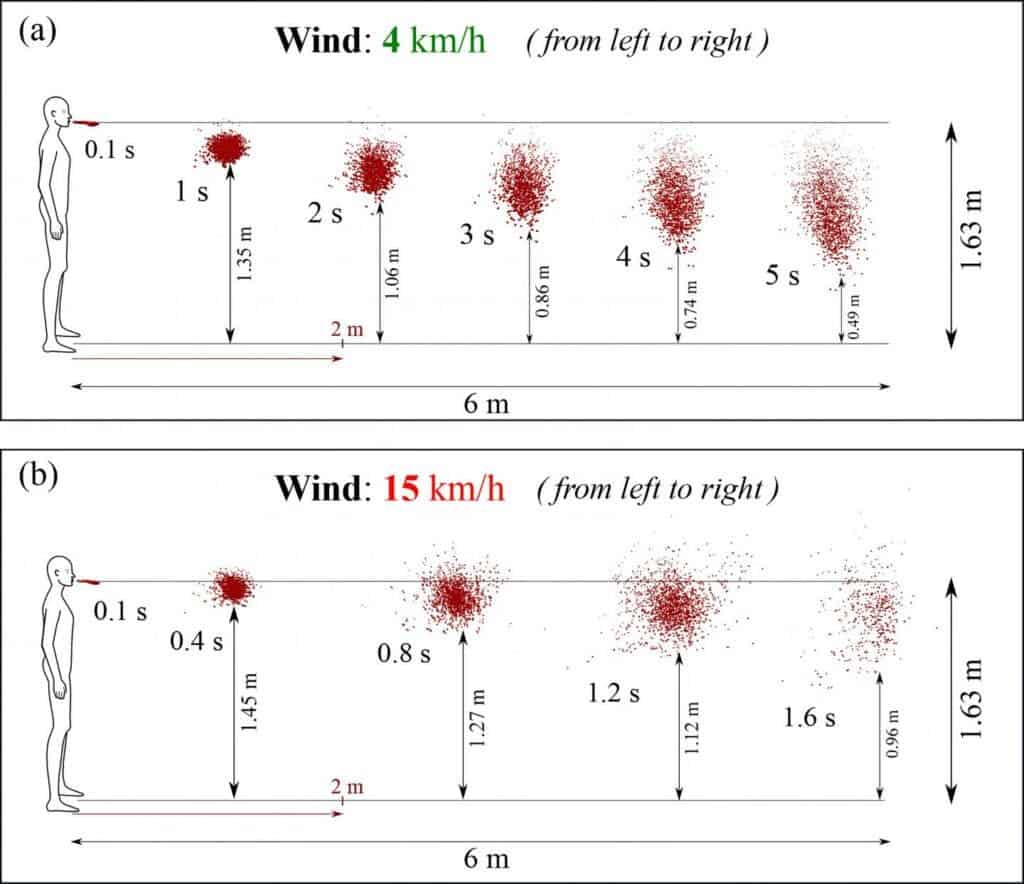
There is still much we don’t know about how the coronavirus spreads, aside from the fact that it is extremely contagious. Particularly, there are many important unknowns regarding the airborne transmission of the virus.
Many governments and public health experts advise that people keep at least two meters (6 feet) of physical distancing between themselves and others while out in public. This is to avoid any contact with virus-containing aerosols generated by a potentially infected person when someone sneezes or coughs.
A new study, however, seems to suggest that the standard two-meter physical distancing recommendation may not be enough — at the very least, two meters of distancing can still be risky in certain situations and environments.
“Our understanding of the mechanisms of airborne transmission of viruses is incomplete. It is likely that the dosage and time of exposure would also determine whether or not infection will finally occur. Therefore, it is crucial to decide on the scenarios that will allow the transmission to longer distances taking into account the environmental conditions (wind speed, relative humidity, temperature). Therefore, we aimed at advancing the understanding of the transfer of airborne particle carriers to humans through advanced droplets fluid flow coupling modeling and simulation,” Professor Dimitris Drikakis, Vice President Global Partnerships at the University of Nicosia and the co-lead author of the new study, told ZME Science.
Drikakis and Talib Dbouk, also from the University of Nicosia, modeled how saliva travels in the air when it is released during a cough by using a computational fluid dynamics simulation. In order to model the complex physics involved, the authors accounted for many factors that can influence the dispersal and evaporation of the saliva droplets, such as temperature, humidity, wind speed, and pressure.
According to the researchers, the model involved running partial differential equations on 1,008 saliva droplets and solving approximately 3.7 million equations in total.
And, like most of us struggling to adjust to life under quarantine, the pair of researchers also had to perform most of this work from home.
“One of the biggest challenges was to set up the fluid mechanics simulation models correctly, thus minimising numerical and modeling uncertainties,” Drikakis said.
“For us, this was the first time in our academic career that we completed a study and discussed all the aspects of the findings and conclusions by working online entirely due to the lockdown”
The simulation showed that even a slight breeze of 4 km/h can cause saliva to travel over 6 meters (18 feet) in just 5 seconds. This suggests that there’s a considerable window of opportunity in which viral transmission can occur, with shorter adults and children at a higher risk if they are located within the trajectory of the coughed saliva droplets.
“Our findings showed that, when a person coughs, the wind speed in an open space environment significantly influences the distance that airborne disease-carrier droplets travel. The main message of the study is that depending on the conditions, the 2 meters social distance will not suffice at mild coughs,” Drikakis said.
“Furthermore, we showed that the droplet concentration can be significant up to considerable distances from the origin of the cough.”
In the future, Drikakis and Dbouk plan on conducting more research to see how wearing a mask might change viral transmission. There are also questions regarding the influence of droplet evaporation under different environmental conditions.
“The public should be aware that environmental conditions can influence the airborne droplet transmission. We believe that our work is important because it addresses health and safety distance guidelines and advances the understanding of spreading of airborne diseases,” Drikakis concluded.
The findings appeared in the journal Physics of Fluids.






